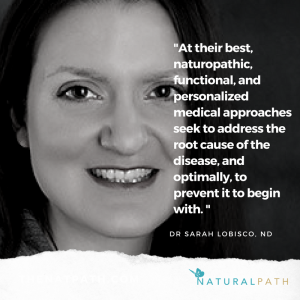The Adverse After Effects That Can Come with a Broken Down Body (Part I)
 One of the most frequent questions I receive about essential oils and supplements is how to use them to “treat” various conditions. Many are looking for a simple swap of a condition for a “magic” oil. This pill-for-every-ill mentality that we’ve been fed for so long runs deeply embedded in our culture and in our current approach to healthcare.
One of the most frequent questions I receive about essential oils and supplements is how to use them to “treat” various conditions. Many are looking for a simple swap of a condition for a “magic” oil. This pill-for-every-ill mentality that we’ve been fed for so long runs deeply embedded in our culture and in our current approach to healthcare.
Oh, if only it were so simple!
‘A Pill for Every Ill’ Mentality Isn’t Working
This approach of matching a symptom to a drug has not been an effective form of healthcare. Furthermore, suppressing disease processes without addressing the cause will never be without unwanted effects. In fact, many people have come to accept “common side effects” as inevitable.
Although some standard-of-care, properly prescribed medications may result in better lab values or relief of some symptoms, actual clinical outcomes, such as improving quality of life, or a decrease in mortality, may not translate.1 Furthermore, some commonly prescribed medications have been deemed ineffective overall in treatment and can be harmful or lead to death.1-5In fact, the risks for harms, hospitalizations, and deaths from adverse effects of medications can be substantial, far beyond the “mild” responses many are programmed to expect.2-5
The United States Food and Drug Administration (FDA) has recognized the need for remediation of the system and has posted an Adverse Drug Reaction (ADR) learning module sponsored by the Agency for Healthcare Research and Quality (AHRQ). Although the exact number of ADRs cannot be fully ascertained, they represent a central, often preventable, healthcare problem. The module states:2
The first question healthcare providers should ask themselves is “why is it important to learn about ADRs?” The answer is because ADRs are one of the leading causes of morbidity and mortality in health care. The Institute of Medicine reported in January of 2000 that from 44,000 to 98,000 deaths occur annually from medical errors.1 Of this total, an estimated 7,000 deaths occur due to ADRs. To put this in perspective, consider that 6,000 Americans die each year from workplace injuries.
However, other studies conducted on hospitalized patient populations have placed much higher estimates on the overall incidence of serious ADRs. These studies estimate that 6.7% of hospitalized patients have a serious adverse drug reaction with a fatality rate of 0.32%.2 If these estimates are correct, then there are more than 2,216,000 serious ADRs in hospitalized patients, causing over 106,000 deaths annually. If true, then ADRs are the 4th leading cause of death—ahead of pulmonary disease, diabetes, AIDS, pneumonia, accidents, and automobile deaths.
These statistics do not include the number of ADRs that occur in ambulatory settings. Also, it is estimated that over 350,000 ADRs occur in U.S. nursing homes each year.32
These are scary statistics; however, this data has been updated and are even more frightful.
In 2006, an article in JAMA reported on estimated adverse drug events over a 2- year period based on a national surveillance of emergency department visits. The authors reported that 21,298 adverse drug event cases occurred. This translated to annual estimates of 701,547 individuals affected negatively by drugs and led to approximately 117,318 hospitalizations.4
This equated to 2.4 individuals out of 1,000 treated in emergency departments for adverse side effects.4 In 2016, JAMA updated their numbers, and the result was an increase of 4 individuals per 1,000 treated in emergency rooms for harmful drug responses.5
These facts, along with our current statistics showing the United States in last place for healthcare among industrialized nations, makes it hard to ignore that we have a very broken system.
The Alternative That Can Still Miss the Mark
Discontent with conventional approaches, many have flocked to additional measures and alternatives. Currently, it is estimated that over 30% of adults use complementary medicine6-7 and that 59 million people age 4 years and over spent money at least once on some type of alternative treatment. This resulted in out-of-pocket expenditures of $30.2 billion with the majority of the money spent on health care practitioners and “natural products.”7
Although headlines in media may hype up harms from supplements and scare consumers, many still seem to equate natural as safer. They would be correct.
In reality, those harmed from supplements, are minuscule in comparison to prescription medications. Although scary scenarios are often plastered over the internet aimed at aromatherapy as well, adverse outcomes are also negligible. Oftentimes the studies on safety are biased and sensationalized. I wrote about that here, here, and here.
Just because a substance has a higher safety profile; however, does not mean it should be portrayed as “cure” or “treatment” for a disease. Using a supplement or herb to replace a medication is ignoring the philosophy of naturopathic medicine. It goes against the personalized medicine approach to consider each unique individual with specific variations in their biochemical makeup and influencing factors.
At their best, naturopathic, functional, and personalized medical approaches seek to address the root cause of the disease, and optimally, to prevent it to begin with. This means different treatments for each individual, even if they have the same disease.
This is where “natural products,” along with lifestyle interventions, when properly applied can be the most powerful form of true health care. If one is aware of the risk factors involved in diseases that they are most prone to, they can become proactive in steps to prevent and remediate their occurrence.
In Part II I will explore an example of how using essential oils can be beneficial in supporting the body’s immune response, specifically in relationship to autoimmunity.
References
- The NNT. Quick Summaries of Evidence Based Medicine. Available at: http://www.thennt.com/
- S. Department of Health and Human Services. The United States Food and Drug Administration (FDA). Preventable Adverse Drug Reactions: A Focus on Drug Interactions. Accessed September 4, 2017. https://www.fda.gov/drugs/developmentapprovalprocess/developmentresources/druginteractionslabeling/ucm110632.htm#ADRs:%20Prevalence%20and%20Incidence
- Coleman JJ, Pontefract SK. Adverse Drug Reactions. CME Clinical Pharmacology. Clinical Medicine. 2016; 16(5): 481–5. Available at: http://www.clinmed.rcpjournal.org/content/16/5/481.full.pdf
- Budnitz DS, Pollock DA, Weidenbach KN, Mendelsohn AB, Schroeder TJ, Annest JL. National surveillance of emergency department visits for outpatient adverse drug events. JAMA. Oct 18 2006;296(15):1858-66.
- Shehab N, Lovegrove MC, Geller AI, Rose KO, Weidle NJ, Budnitz DS. US Emergency Department Visits for Outpatient Adverse Drug Events, 2013-2014 [abstract]. JAMA[online]. 2016 Nov 22;316(20):2115-2125. Available at: https://www.ncbi.nlm.nih.gov/pubmed/27893129
- Nahin R, Barnes PM, Stussman BJ. U.S. Department of Health and Human Services. Centers for Disease Control and Prevention. National Center for Health Statistics. Expenditures on Complementary Health Approaches: United States, 2012. National Health Statistics Reports. Number 95, June 22, 2016. Available at: https://www.cdc.gov/nchs/data/nhsr/nhsr095.pdf
- S. Department of Health and Human Services. NIH: National Center for Complementary and Integrative Health. Use of Complementary and Integrative Health Approaches in the United States, 2012. Available at: https://nccih.nih.gov/about/strategic-plans/2016/use-complementary-integrative-health-approaches-2012
Image Copyright: <a href=’https://www.123rf.com/profile_olivier26′>olivier26 / 123RF Stock Photo</a>
 Sarah Lobisco, ND, is a graduate of the University of Bridgeport’s College of Naturopathic Medicine (UBCNM). She is licensed in Vermont as a naturopathic doctor and holds a Bachelor of Psychology from State University of New York at Geneseo.
Sarah Lobisco, ND, is a graduate of the University of Bridgeport’s College of Naturopathic Medicine (UBCNM). She is licensed in Vermont as a naturopathic doctor and holds a Bachelor of Psychology from State University of New York at Geneseo.
Dr. LoBisco is a speaker on integrative health, has several publications, and has earned her certification in functional medicine. Dr. LoBisco currently incorporates her training as a naturopathic doctor and functional medicine practitioner through writing, researching, private practice, and through her independent contracting work for companies regarding supplements, nutraceuticals, essential oils, and medical foods.
Dr. LoBisco also enjoys continuing to educate and empower her readers through her blogs and social media. Her recent blog can be found at www.dr-lobisco.com.

















